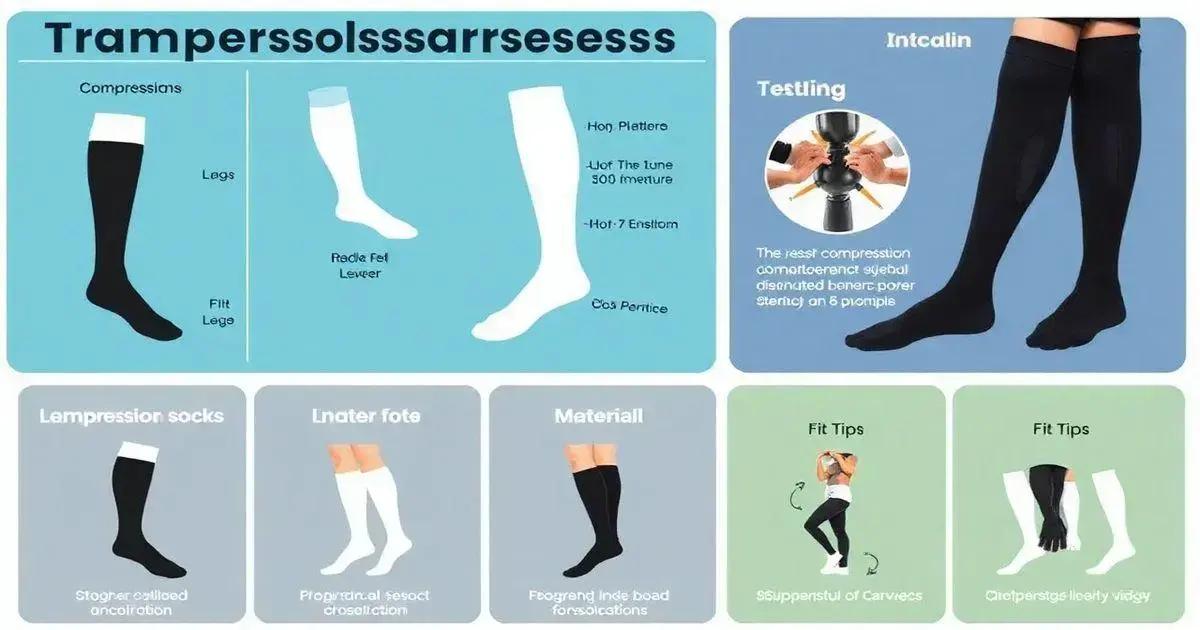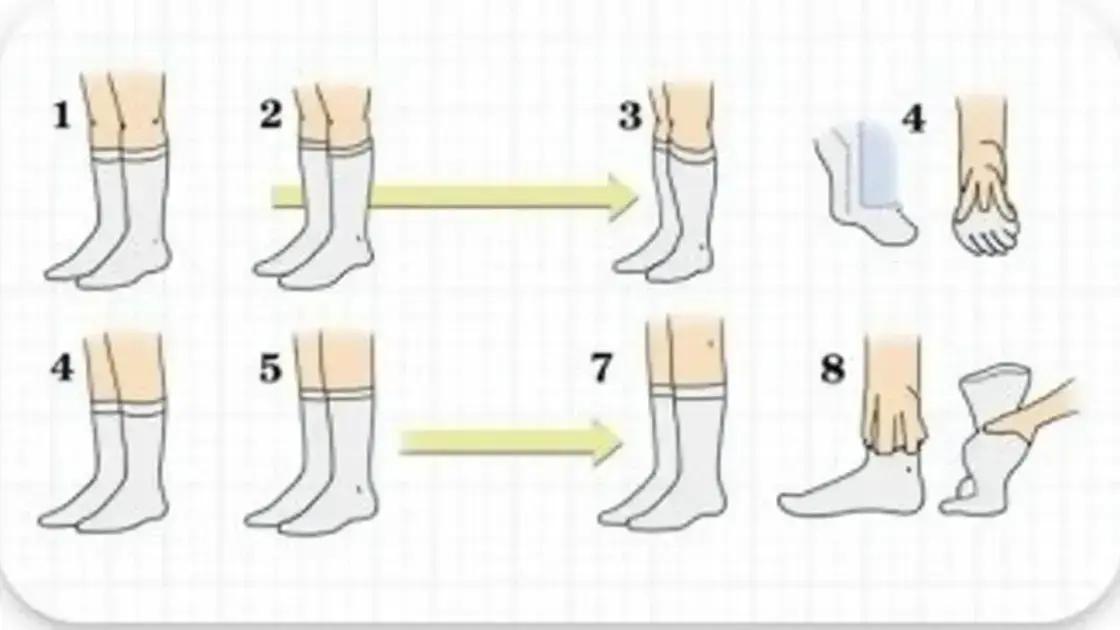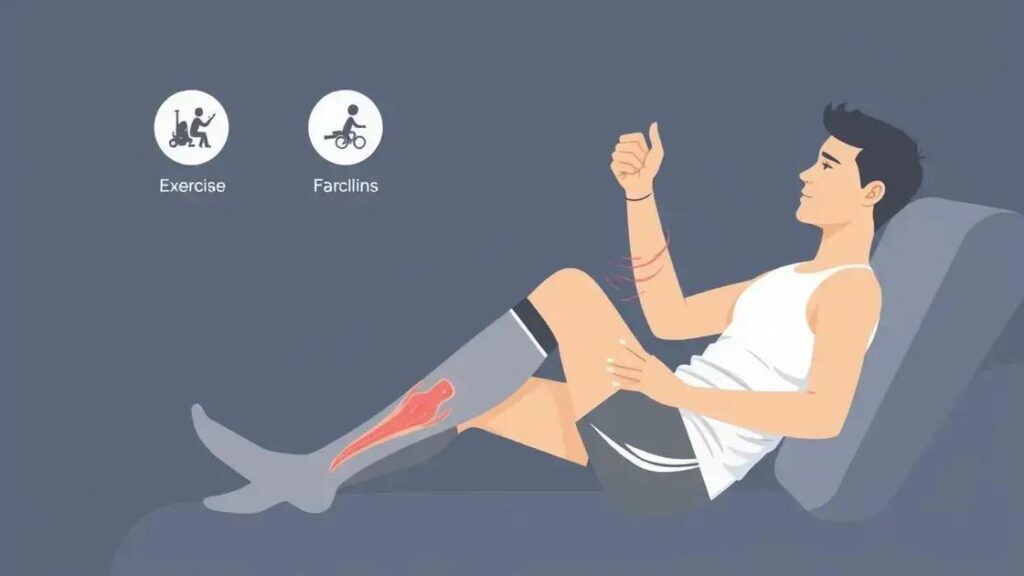Compression socks help improve leg circulation by applying graduated pressure, which enhances blood flow, reduces swelling, and provides comfort during long periods of sitting or standing. They are essential for individuals at risk of poor circulation due to various lifestyle factors.
Are you struggling with poor leg circulation? Using compression socks might be the answer you need! These specialized socks help improve blood flow and reduce discomfort, making them an essential tool for many people. In this article, we will delve into the science behind leg circulation, the numerous benefits of compression socks, how to select the best pair for your needs, and tips for effective usage.
Understanding Leg Circulation

Understanding leg circulation is essential for maintaining overall health. Blood flow plays a critical role in how our body functions, bringing oxygen and nutrients to cells while removing waste products. When circulation in the legs is impaired, it can lead to discomfort, swelling, and even serious health issues.
What is Leg Circulation?
Leg circulation refers to the movement of blood through the veins and arteries in the legs. The heart pumps oxygen-rich blood through the arteries to supply muscles and tissues. Once the oxygen is used up, the blood returns to the heart through veins. This process is crucial for maintaining leg health and function.
Factors Affecting Leg Circulation
Several factors can affect leg circulation. These include:
- Age: As we grow older, blood flow can naturally decline.
- Lifestyle: Sedentary behavior can reduce circulation, while regular exercise improves blood flow.
- Health Conditions: Conditions such as diabetes, obesity, and vascular diseases can impede blood flow.
Signs of Poor Circulation
It is vital to recognize signs of poor leg circulation. They can include:
- Swelling in the legs or ankles
- Pain or cramping in the legs
- Coldness in the lower legs or feet
- Varicose veins
If you experience these issues, it’s crucial to consult a healthcare professional.
The Importance of Improving Circulation
Improving circulation can lead to better overall health. Enhanced blood flow helps reduce the risk of blood clots, improves energy levels, and supports tissue repair. Understanding these aspects can help motivate individuals to seek solutions, such as compression socks, to enhance their leg circulation. By addressing circulation effectively, you can enhance your quality of life and maintain active, healthy legs.
The Benefits of Compression Socks

Compression socks are specially designed hosiery that apply gentle pressure to your legs and feet. This pressure helps support blood flow, which has numerous benefits for leg health.
Improved Circulation
One of the primary benefits of compression socks is improved circulation. By applying consistent pressure, these socks help the veins in your legs move blood back to the heart more efficiently. This can help prevent blood pooling and reduce the risk of varicose veins.
Reduced Swelling
Compression socks can significantly reduce swelling in the legs and feet. This is especially beneficial for individuals who spend long hours sitting or standing. By helping to maintain proper blood flow, compression socks can alleviate discomfort caused by swelling.
Enhanced Recovery
Athletes can benefit from compression socks as they aid in muscle recovery after intense workouts. Similar to their impact on circulation, these socks support the muscles and help minimize soreness post-exercise. This allows athletes to recover faster and perform better in their next workout.
Prevention of Blood Clots
For people who are at risk of blood clots, compression socks can provide an added layer of protection. The graduated compression can help prevent deep vein thrombosis (DVT), a serious condition where blood clots form in the deep veins of the legs.
Improved Comfort
Wearing compression socks can enhance comfort for those who experience leg fatigue. The snug fit can provide a sense of support, reducing feelings of heaviness in the legs, making it easier to stay active throughout the day.
Incorporating compression socks into your daily routine can improve leg health and overall well-being significantly. Many people who wear them regularly report noticeable differences in comfort and energy levels.
Choosing the Right Compression Socks

Choosing the right compression socks is vital for getting the maximum benefits. The right fit will ensure comfort and effectiveness in improving leg circulation.
Understand Compression Levels
Compression socks come in different levels of compression, measured in mmHg (millimeters of mercury). Common levels include:
- Light Compression (8-15 mmHg): Ideal for daily wear and mild symptoms.
- Moderate Compression (15-20 mmHg): Good for travel, standing for long periods, or light sports.
- Firm Compression (20-30 mmHg): Recommended for medical conditions or significant swelling.
It’s essential to assess your needs before choosing a compression level.
Consider the Sock Length
Compression socks come in various lengths:
- Knee-high: Effective for most leg issues and widely popular.
- Thigh-high: Offers more comprehensive coverage, suitable for more severe conditions.
- Waist-high: Ensures maximum compression for those with severe swelling.
Choosing the right length depends on the area needing treatment.
Material Matters
The material of the compression socks can affect comfort and durability. Look for socks made from breathable materials such as:
- Lycra
- Nylon
- Spandex
These materials provide flexibility and moisture control, making them comfortable for wear all day.
Fit and Sizing
Proper sizing is crucial. Measure your legs according to the manufacturer’s guidelines to ensure a snug fit. Compression socks should feel tight but not restrictive. Try on different brands to find the best fit for your legs.
With the right compression socks, you can improve leg circulation effectively, enjoy daily activities, and feel better overall.
How to Use Compression Socks Effectively

Using compression socks effectively requires attention to detail to achieve the best results. Here are some tips for using them properly.
Wear Them at the Right Time
Compression socks should be worn during activities such as long flights, extended periods of standing, or while exercising. For optimal results, wear them throughout these activities and even during rest periods.
Put Them On Properly
To get the benefits, it’s important to wear compression socks correctly. Follow these steps:
- Start with Clean, Dry Legs: Before putting on your socks, make sure your legs are clean and dry to avoid discomfort.
- Gather the Sock at the Heel: Hold the heel of the sock and gather the rest of the material to make it easier to put on.
- Slide the Sock On: Carefully slide the sock onto your foot, making sure it aligns with your heel. Smooth out any wrinkles as you pull it up your leg.
Adjust for Comfort
The socks should feel snug but not painfully tight. If they cause discomfort, remove them and try a different size or compression level. Always ensure they are not bunched up or twisted.
Maintenance and Care
To prolong the life of your compression socks:
- Wash Regularly: Follow the care instructions on the label. Hand washing may be best to maintain elasticity.
- Avoid Fabric Softeners: These can break down the compression material, reducing effectiveness.
- Air Dry: Lay them flat to dry rather than using a dryer to prevent damage.
Monitor Your Legs
While using compression socks, observe how your legs feel. Look out for any unusual symptoms like increased pain, swelling, or discoloration. If you notice these, consult a doctor.
By using compression socks effectively, you can enhance leg circulation and improve your overall comfort throughout the day.
The Key to Healthier Legs: Better Circulation with Compression Socks
In summary, compression socks offer a practical and effective solution to improve leg circulation. By enhancing blood flow, these socks provide relief from swelling, discomfort, and fatigue associated with prolonged sitting or standing. Understanding the different types of compression socks, their benefits, and how to use them correctly empowers you to make informed choices for your leg health.
By selecting the right compression socks, wearing them properly, and maintaining them, you can enjoy a range of benefits that contribute to your overall well-being. Whether you’re an athlete, a professional on your feet all day, or someone traveling long distances, incorporating compression socks into your routine can lead to healthier legs and a better quality of life.
Don’t underestimate the power of proper leg care; embrace the benefits of compression socks and feel the difference in your daily life.
FAQ – Frequently Asked Questions about Compression Socks
What are compression socks?
Compression socks are specialized hosiery designed to apply pressure to your legs and feet, promoting better blood flow and circulation.
Who should use compression socks?
They are beneficial for individuals with poor circulation, those who stand or sit for long periods, athletes, and people prone to swelling or blood clots.
How do I choose the right compression socks?
Select compression socks based on the compression level needed, the length of the sock, the material, and ensure proper fit by measuring your legs.
How long should I wear compression socks?
You can wear them throughout the day during activities like travel, exercise, or long periods of standing. They can also be worn while resting for ongoing benefits.
Can compression socks be washed?
Yes, it’s important to wash them regularly following the care instructions on the label. Hand washing is often recommended to preserve elasticity.
Are there any side effects to wearing compression socks?
While generally safe, if you experience increased pain, swelling, or numbness, you should remove the socks and consult a healthcare professional.












